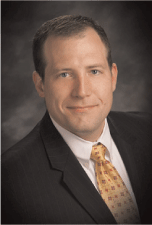Automating the process of net environmental benefit analysis (NEBA) for emergency response and environmental plans
Jack Williams A , Garnet Hooper B and Gregg Hamilton CA ConocoPhillips.
B Sinclair Knight Merz.
C Blue Ox Environmental.
The APPEA Journal 54(2) 497-497 https://doi.org/10.1071/AJ13070
Published: 2014
Abstract
Each year in Australia, hundreds of referrals and environmental plans (EPs) are submitted to the regulatory agencies by oil and gas explorers. The plans assess multiple spill response options. One assessment tool is NEBA. This extended abstract presents a new approach for NEBAs and an automated NEBA process. This NEBA method has two scenarios: pre-spill and spill response. The pre-spill NEBA uses EP-defined sensitive receptors as appropriate examples in the region of interest, uses the modelling outputs to identify potential exposure zones, defines critical inputs (season, spill size), defines and ranks priority response according to the modelling output, and assesses spill response strategies. The output of the pre-spill NEBA is a table of response tactics to be assessed with respect to reducing risk to as low as reasonably practicable (ALARP). The spill response NEBA is similar to the pre-spill, but it uses real-time spill modelling data as an additional input to strengthen the data evaluation. Traditionally, both pre- and spill response NEBAs require considerable data input, extensive mathematical modelling and human interpretation. Automating the NEBA process saves time, reduces errors and minimises human biases in interpretation. ConocoPhillips has recently developed a tool to quickly conduct NEBAs. The NEBA tool also provides a means to document the progress of operational and scientific monitoring programs to measure the performance of the spill response. The automated process output can be time/date stamped to ensure critical steps are fully documented and auditable.

Jack Williams has a BSc and an MSc in geology. He has worked as an environmental professional for the past 27 years. Jack is a senior environmental scientist with ConocoPhillips. Jack has worked in both upstream and downstream operations, managed Emergency Response for the COP Pipeline Company, managed the Regulatory Group for the Gulf Coast Business Unit and managed Health, Safety and Environment for the Algeria Business Unit. Presently, Jack is managing environmental projects in the Browse and Bonaparte Basins, offshore Australia. |

Garnet Hooper has a BSc, an MSc and a PhD in marine ecology. He is a marine scientist with over 16 years’ professional commercial environmental experience. Garnet is an executive marine science consultant with Sinclair Knight Merz. He has designed, managed and delivered regional scale coastal and offshore impact assessment scopes and baseline studies (including trunkline surveys), and wrote the standard process for the habitat mapping of offshore sea beds. Garnet applies multivariate techniques to the analysis of regional-scale survey datasets (water quality, sediments and BPPH), providing technical strategic advice to project managers and clients. He also manages SKM’s Sediment Profile Imagery (SPI) capability. Recently, he has been providing EP and Oil Spill preparedness support for clients, and designed the processes automated in the ConocoPhillips NEBA tool (the NEBA, OSMP tracker and response priority guidance tools). |

Gregg Hamilton is a biologist and environmental professional working in the upstream petroleum industry as a consultant and advisor for over 15 years. He has extensive experience in spill prevention, emergency response planning, hazard analysis and risk mitigation. Gregg has assisted with upstream operators with regulatory planning and permit acquisition for exploration and field development and has become a respected liaison with federal, state and local regulatory agencies. In 2008, he founded Blue Ox Environmental Planning Services, LLC to specifically assist Oil and Gas companies with proactive planning and cost saving measures. His company has services clients globally, with primary focus in Southern and Mid-Western United States, north Africa and Australia. |


